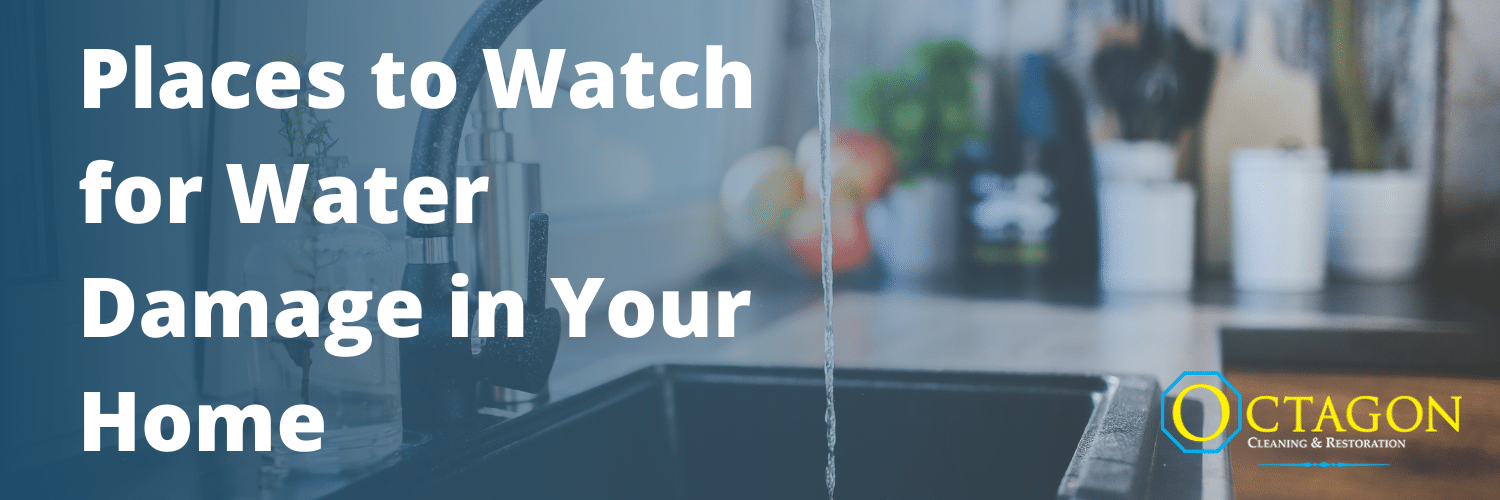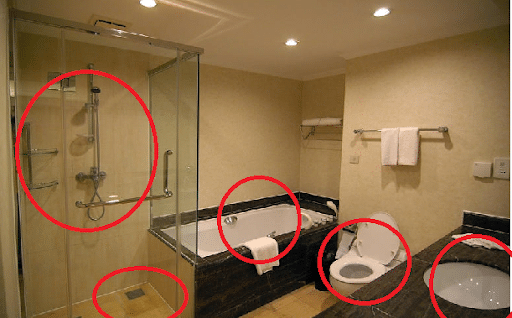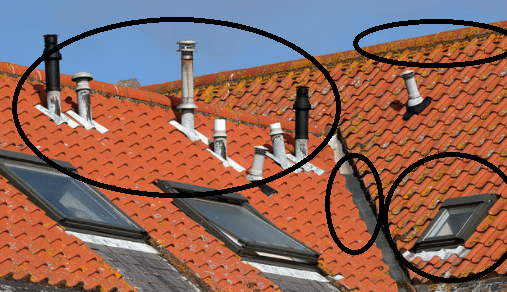
Water damages can happen in any area of the home under the right conditions. Some of these areas are more prone to experiencing water damage than others. In this blog, we will go over which areas in our home are at the most at risk and why one cause can be more dangerous than others. Water is not only vital for survival water can also be hazardous to our health which can make us sick due to the contaminants in the water. If you would like to learn more about the types of water, please click here.
In this day and age, we have many water sources throughout our homes based on our tastes. We may have the standard plumbing systems, for example, heat and hot water or dishwashers or an indoor pool. No matter what plumbing systems you have, you can be at risk for water damage without even knowing.Let’ss go over some of the more common areas of the home to keep an eye out for water damage.
High-Risk Areas to Look for Water Damage
Kitchens

Kitchens have several issues to watch out for when it comes to water damage. In the picture above, I have highlighted the most common areas to keep an eye on as these areas are the most susceptible to failure and cause water to escape into your home.
- Refrigerators – Most of us don’t think of a refrigerator as a source of water damage. Why would we? While some refrigerators aren’t a risk at all, others can wreak havoc on your home if they fail. Does your refrigerator have an ice maker? If you answered yes, then you have a recipe for water damage. Ice makers are one of the biggest causes of water damages in Kitchens. Do you know the hose in the back of the refrigerator that supplies the water to your ice maker or drinking water? That water line is under approximately 40 – 120 pounds per square inch of pressure. If this line bursts or begins to leak, it can cause water damage in seconds. Often, we don’t even know it’s happening until it’s too late.
- Dishwashers – While we love the convenience of having a dishwasher, we hate what it can do to our kitchen. Dishwashers are another common source of water damage. Like refrigerators, dishwashers are in between cabinets providing a hiding place for damage. Whether you have a missing or failing gasket around the door, a leaking supply connector, or a leaking pipe under or behind, you won’t know before the damage has happened.
- Sinks – Sinks is one feature in the kitchen that we all want. It supplies our drinking water, water for cooking, cleaning, etc. While the sink is great when it works, the damage it can cause can be extensive if it fails. Unlike refrigerators and dishwashers, water damages caused by sinks are more visible and easier to identify, allowing for easier cleanup limiting the damage. There are several areas associated with your sink that can fail to cause water damage. Leaking gaskets around your faucet or drain, or bad caulking around sinks, will allow water to escape and penetrate your countertops or cabinets.
- Windows and Doors – I can understand you were surprised on this one. While there is no plumbing attached to your windows and doors, water can get in from outside sources like flooding or storm damage if you are not prepared. Water can seep in around damaged flashings, weather stripping, or failed caulking. Over time causes damage that is less visible until you start noticing mold or much worse rot.
Above, we went over multiple issues that can cause mild to severe water damages in your kitchen some other rooms in the home that can be a magnet for disaster. Our next room is no stranger to water damage. Bathrooms are just as necessary in a home, as the kitchen and just as susceptible to water damages.
Bathrooms

Like kitchens, bathrooms are also at the top of the list for water damage in the home. Bathroom water damages can come from many sources such as the toilet, sink, bathtub, shower, and so forth. Some plumbing failures can be easy to identify, for example, burst pipes or toilet overflows. The more hidden water issues like a wax ring on a toilet failing, allowing water to escape beneath the floor, causing hidden damage that will require extensive repairs the longer it sits.
Earlier, we went over how sinks and drains can cause water damage in the kitchen. Nowlet’ss go over how toilets and tubs can become an issue.
- Toilets – Toilet can have several failures: Toilet overflows which can come from the tank or bowl caused by blockages. Bad wax rings that allow water to escape from the trap. Back-ups from the septic and or toilet supply lines can burst. All these scenarios can result in water damage.
- Bathtubs or showers – Bathtubs/Showers have several areas to watch out for, although they are made to be wet and hold water. Many failures can happen, which will allow the moisture to escape into your home if not properly maintained. Some issues that we recommend you watch out for are missing or damaged grout or caulking, failed supply lines, and plumbing leaks.
Basements
Basements are the lowest level in a home and contain boilers, water heaters, laundry facilities, well pumps, etc. To avoid the mayhem in your basement, regularly inspect these appliances to ensure they are operating correctly. One topic we had not gone over is groundwater infiltration and flooding. Groundwater can get into the home in many ways, windows, doors, leaking or compromised foundations, clogged perimeter drains, or sump pump malfunctions. We recommend regularly inspecting your basements to ensure that you can help prevent any of these issues from happening to you.
Roofs

Another area of concern is the roof of our home. Roofing can fail in many ways neglect, missing or damaged shingles, bad flashing around chimneys and valleys, missing or damaged gaskets around vent pipes, poor weather stripping around skylights and ice dams in the winter.
Your Water Damage Restoration Partner
Our homes are where we make memories,let’ss not allow water damage to be part of a memory in our home. While not all water damages are preventable, keeping an eye on the above areas in the home and making repairs before the damage occurs will help keep you and your home a healthy home.

